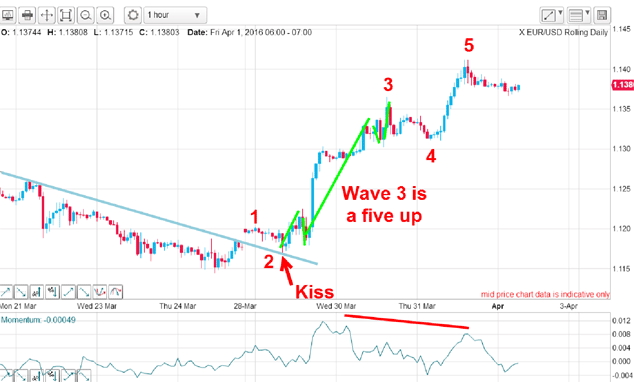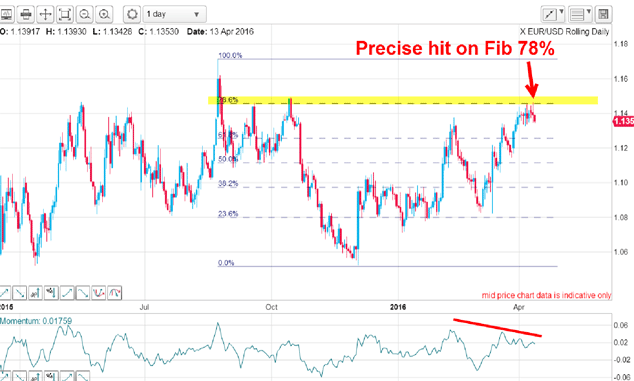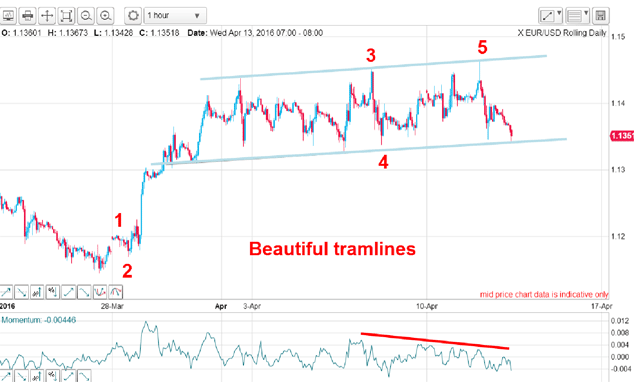Hedge funds are bearish the dollar. I am not.
Hedge funds have abandoned the dollar in their droves. John C Burford explains why they're wrong.
My recent exploits in EUR/USD have offered textbook examples of how I play the twists and turns in the tricky currency markets using my tramline methods(incidentally, aren't they all very tricky?).
But the recent gyrations in EUR/USD have been particularly volatile. Many traders I am sure have been puzzled by these antics where whipsaws are common.
So today, I will follow up on this trade because I have combined analysis of the short-term chart with the medium-term and fixed a maximum upside target which was met yesterday.
MoneyWeek
Subscribe to MoneyWeek today and get your first six magazine issues absolutely FREE

Sign up to Money Morning
Don't miss the latest investment and personal finances news, market analysis, plus money-saving tips with our free twice-daily newsletter
Don't miss the latest investment and personal finances news, market analysis, plus money-saving tips with our free twice-daily newsletter
In my last update poston 1 April, I held a long position from the 1.12 area and observed the "Yellen rally" in five motive waves on the hourly:

The potential was for the market to start a turn back down since five waves appeared completed and there was a nice momentum divergence.
But there was also another option: the market could go on to make new highs where my wave 5 was in reality just a larger scale third wave with waves 4 and 5 to come. I certainly did not want to miss that possibility to grab an extra profit.
And that is why I decided to use my split-bet strategy where I took a profit on one half of my position and left the other part open and raised my protective stop to at least the break-even point.
Since then, the market rally was maintained and rose to my target, which I gave earlier at the 114.50 area and this was the long-range daily chart I used to determine this target:

And this is what I wrote: "The rally has carried well above the Fibonacci 62% level where most turns are made. The next heavy resistance lies at the 78% level at around 1.1450, which is about 70 pips from the current price. That would be a nice addition to profits."
Here is the daily chart updated:

Yesterday, the market spiked up to 1.1465 and then fell back making a direct hit on my target where I was waiting to take the remaining profit.
Here it is on the hourly:

The churning over the past few days has been difficult to analyse in Elliott wave terms, but I believe this is the most likely count. Yesterday's spike high was the final fifth wave. Also, this churning has been contained in the channel between a lovely tramline pair.
So with the 1.1450 Fibonacci target having been hit on a momentum divergence, and the hourly showing a complete five up (also on a momentum divergence), I have a terrific setup.
Breaking the lower tramline should help cement my bearish case.
Lurking in the background is a growing bearish sentiment picture towards the dollar. I have seen recent headlines referring to the death of the dollar. Here is one from Bloomberg: "Hedge funds abandoning dollar's biggest bull run in a generation" .
Hedge funds have been shedding long dollar bets in droves and now hold only a fraction of their former long futures positions. Apparently, they have followed like sheep the Fed's latest "hint" that they will now go easy on rate rises.
And this abandonment took place in a market that showed no clear trend. Normally when hedge funds take one course of action, it moves the market mightily, but not this time. Is that a vital clue that the next big move in the dollar will be up?
If I am right, they have made a very big mistake but have followed their traditional pattern of being maximum wrong at major turns.
Get the latest financial news, insights and expert analysis from our award-winning MoneyWeek team, to help you understand what really matters when it comes to your finances.
John is is a British-born lapsed PhD physicist, who previously worked for Nasa on the Mars exploration team. He is a former commodity trading advisor with the US Commodities Futures Trading Commission, and worked in a boutique futures house in California in the 1980s.
He was a partner in one of the first futures newsletter advisory services, based in Washington DC, specialising in pork bellies and currencies. John is primarily a chart-reading trader, having cut his trading teeth in the days before PCs.
As well as his work in the financial world, he has launched, run and sold several 'real' businesses producing 'real' products.
-
 Why pension transfers are so tricky
Why pension transfers are so trickyInvestors could lose out when they do a pension transfer, as the process is fraught with risk and requires advice, says David Prosser
-
 The political economy of Clarkson’s Farm
The political economy of Clarkson’s FarmOpinion Clarkson’s Farm is an amusing TV show that proves to be an insightful portrayal of political and economic life, says Stuart Watkins